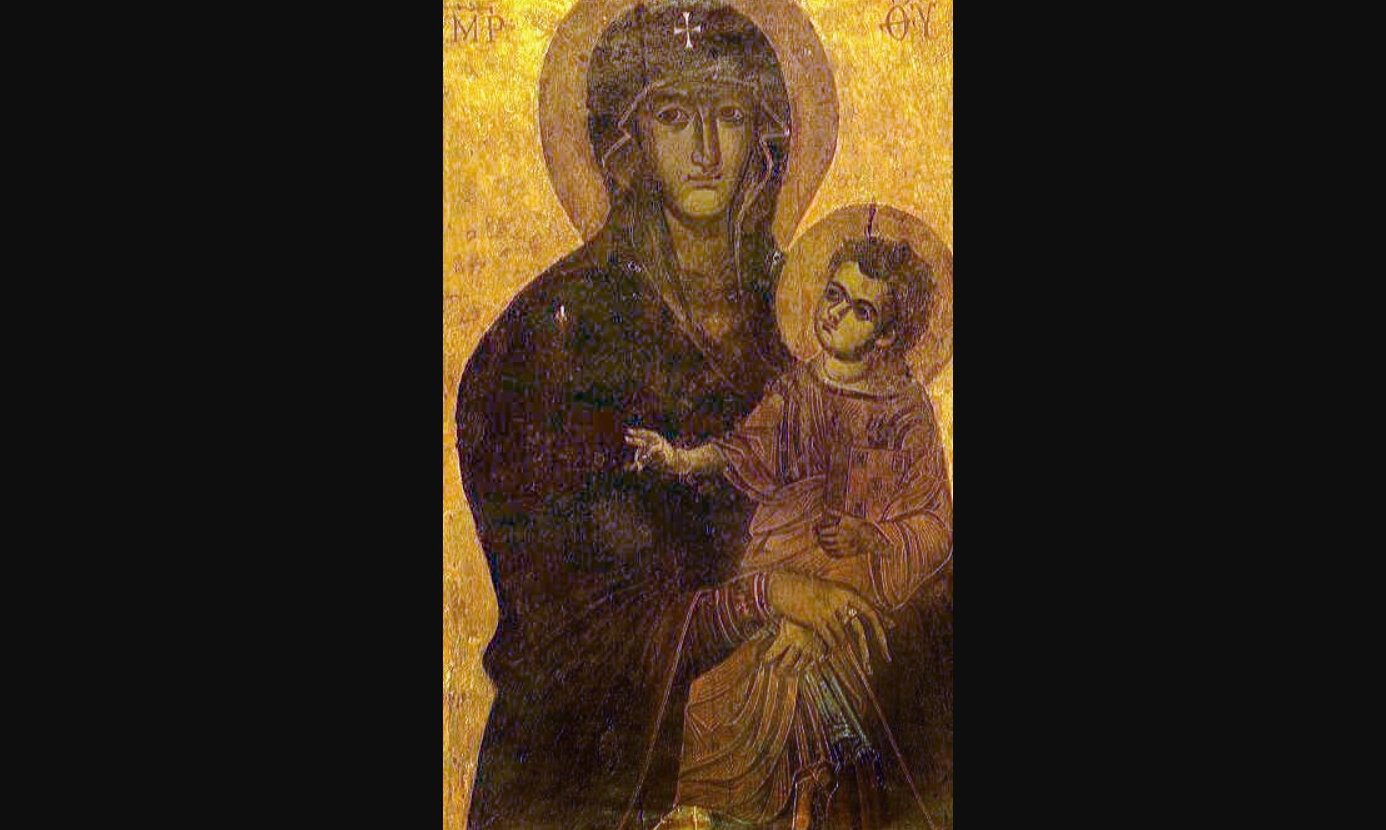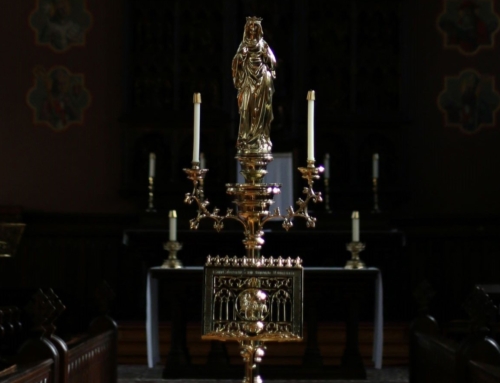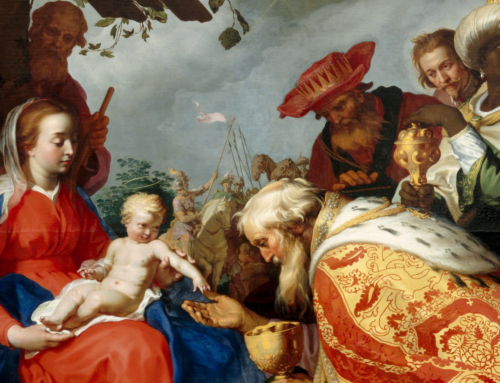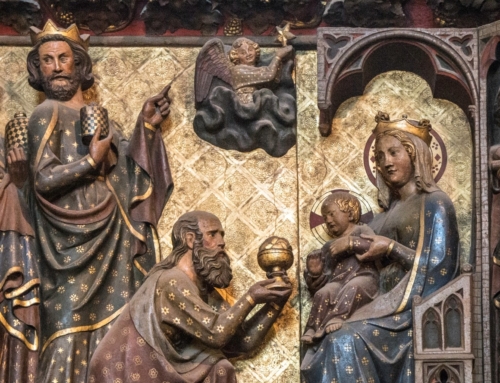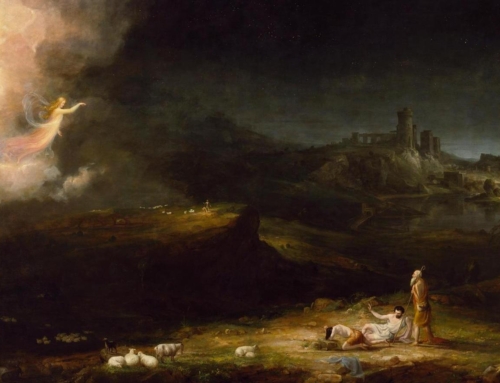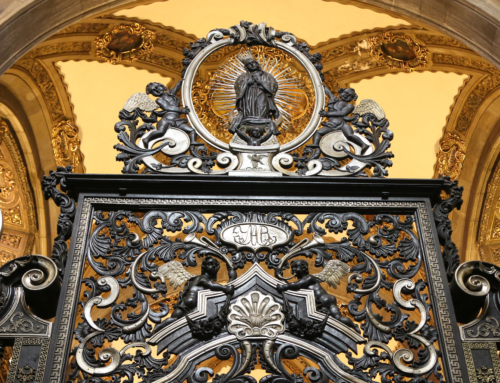The Sights and Sounds of Christmas:
Sancta Maria Salus Populi Romani
The Papal Basilica of Santa Maria Maggiore, which sits upon the Esquiline Hill of Rome, contains a unique and ancient icon beloved by Romani and people throughout the world. The icon of Santa Maria Salus Populi Romani (an ancient title meaning “Saint Mary, Health of the Roman People”) dates back to early Christian and, some even say, apostolic times. However, it has been in Mary’s Roman Church since 590, during the papacy of St. Gregory the Great. Santa Maria Maggiore was built in the 430s after the Council of Ephesus had declared Mary “the Mother of God.” Fittingly, the ancient icon of Salus Populi Romani, written long before this doctrine was officially declared, demonstrates through art both the human and divine natures of Christ in one person which allows us to call Mary the true mother of God.
The Salus Populi Romani, like many depictions of Christ’s infancy, shows a truly human scene. The action of a mother holding a child is a very earthly action. Mary’s tender embrace of her child with her arms wrapped around her son reveals a very human relationship. Likewise, Jesus’s gaze at his beloved mother shows the same love and devotion children have for their mothers. One can even see a clear resemblance between the nose and face of each, which shows a biological relationship. It is clear, both in the way Jesus sits in Mary’s arms and by the resemblance between Mary and Jesus, that Mary is his true mother. She gave Jesus his human nature and she cared for him as a mother cares for her child.
The icon, however, does not merely focus on Christ’s humanity. The young Jesus is also depicted as divine. The artist of the Salus Populi Romani uses certain symbols and actions to show Christ’s hidden divine nature. First, there is the cruciform halo around his head, which foreshadows Jesus’s triumph on the Cross. Second, the left arm of Jesus holds a book of Sacred Scripture, which shows his connection, as the Word of God, to the scriptures he inspired. Third, Jesus’s right hand is stretched out over his mother as if he were blessing her. This gesture alludes to how Mary, although sinless, was saved by the grace of Christ. The Church teaches that Mary was saved in the womb of Anna “in virtue of the merits of Jesus Christ, the Savior of mankind.”
Christ’s humanity and divinity are both clearly displayed in the icon. Importantly, the Salus Populi Romani does not present these as isolated ideas. They are shown to be in a single person: a boy in his mother’s arms. The two natures are present even in the child Jesus. From the moment of his conception in Mary’s womb at the Annunciation, he is both God and man. Therefore, since Mary gave birth to this whole person, we can call her not only “the mother of Jesus” or “the mother of Christ,” but truly “the mother of God.”
Above Mary and Jesus, there are four Greek letters which commonly appear above images of Mary. They read (in Roman letters) “MR,” a shorthand for Mētēr or mother, and “THU,” a shorthand for Theou, which means “of God.” It is only possible for Mary to be God’s mother because of who Jesus is as human and divine. If Christ was merely a man, Mary would be no different from any other woman. And if Christ was only divine, she could not be his mother at all. But the one person of Christ is both God and man, as is depicted in the icon. It preaches that through Christ’s humanity and divinity, Mary is indeed God’s mother, humanity’s greatest honor.
✠
Image: Anonymous, Sancta Maria Salus Populi Romani

